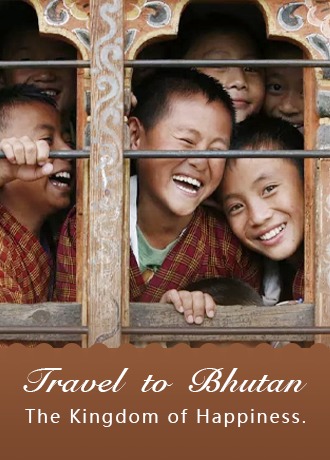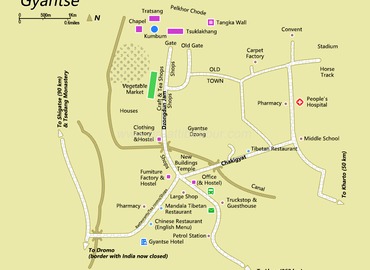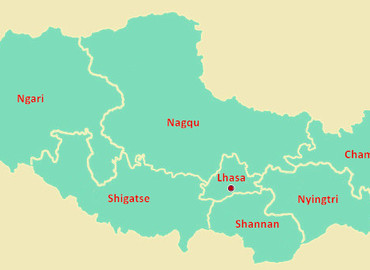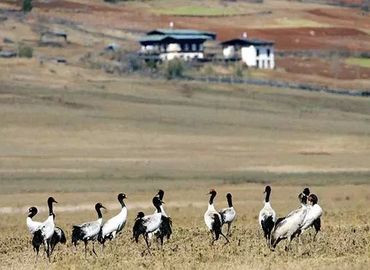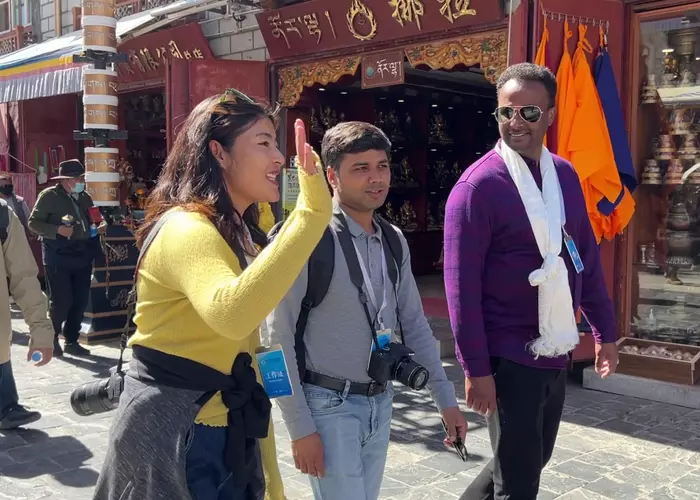Top 20 Tourist Places to Visit in Bhutan
- Last Updated : 11/18/2025
Bhutan is a mysterious and remote Himalayan country in the eyes of the outside world. Its territory extends from the Himalayan snow mountain of more than 7,000 meters in the north to the relatively hot low-altitude area in the south. The diverse natural scenery provides the possibility of Bhutan tourism of various themes, such as Bhutan leisure trips, Bhutan sightseeing trips, family trips, Bhutan treks, etc.
Here is soaked with a strong Tibetan Buddhism color. You will see various temples and Buddhist holy sites. Each scenic spot has religious legends. Religion has also shaped the gentle character of the Bhutanese. Here are the top 20 tourist places in Bhutan according to the conventional tourist routes, among which Tiger's Nest, Rinpung Dzong, Punakha Dzong, Trashi Chhoe Dzong, and Dochu La Pass are the most worth visiting attractions.
Tiger’s Nest - The Most Sacred Attraction in Bhutan
Tiger’s Nest (also Tiger Cave Temple or Taktsang Goemba) is located on a 900-meter mountain cliff in Paro Valley, 3,120 meters above sea level. This temple was built in 1692 and it's regarded as the most prominent place of interest in Bhutan. According to legend, the Indian monk Guru Padmasambhava once meditated and practiced here. It is a holy place for all Bhutanese believers to worship. The temple experienced a fire in 1998, and then it was restored in 2005.
Tourists generally need to be led by a tour guide to enter the Tiger's Nest. It usually takes about 2 hours to trek up the mountain. There are horse rides (20-30 US dollars). You can consult your tour guide if you need to. However, even riding up the mountain is very bumpy. In some sections of the road, you have to lie on the horse to prevent it from falling. You still need to hike on your own when going down the mountain. Bhutanese believe that only hiking is pious enough.
There are two viewing platforms on the way. The first viewing platform is a horse station where horses can rest. From here, you can see a group of white buildings on the cloud-shrouded mountain cliffs, like a fairyland, that is the Tiger’s Nest.
The second viewing platform can clearly see the Tiger’s Nest, which is also a good place to take pictures. You can no longer ride horses here. You need to walk up the stairs with your legs to finish the next journey.
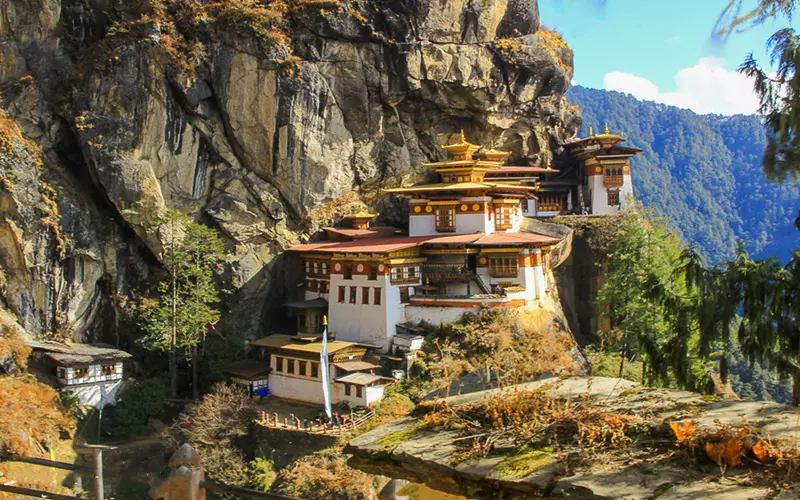
There is a waterfall hanging in front of the monastery gate, and the water flows over the layers of rocks into the deep pool. This is the legendary rosary scattered by Guru Padmasambhava.
The entire monastery complex is composed of four main halls and living areas, most of which are built along the mountains. Every building here has a balcony, from which you can see a beautiful view of the Paro Valley.
Only through a narrow passage can you enter the main cave of the monastery. Butter lamps are shining in the dark cave, and you can see the statue of the angry incarnation of Guru Padmasambhava Dorje Zolo, who stepped on the female tiger, describing the scene of his practice in the past. In addition, the elegant Thousand-Hand Guanyin Buddha and dozens of Bodhisattva statues are also worth watching.
- Tourist Spot Address: Taktsang Lhakhang, Taktsang Trail, Paro Bhutan
- Opening Hours: 8:00-13:00, 14:00-18:00
- Best Time to Visit: March to June, September to December each year
- Nearby Restaurants: Taktsang Cafeteria, with a great view of Tiger’s Nest
Travel Tips:
- A strict security check is required to enter the temple. Matches, lighters, cameras, and mobile phones are not allowed in the temple. Photographs are strictly prohibited in the temple.
- Pay attention to weather conditions. Slippery roads on rainy days, please try to avoid it.
- The climbing path is steep. It is recommended to prepare trekking poles.
Rinphung Dzong – The Most Famous Architecture in Bhutan
Rinphung Dzong is also called the Paro Dzong fort, which means "jewel pile on the fortress". Built in 1644, Rinphung Dzong is one of Bhutan's most famous temples and a representative of Bhutan's classic architecture. Standing tall above the town of Paro, it was once used as a fortress to defend the Paro Valley. Like other dzong forts in Bhutan, it's not only a Buddhist temple and serves some government functions. The famous Bhutan movie "Little Living Buddha" was filmed here.
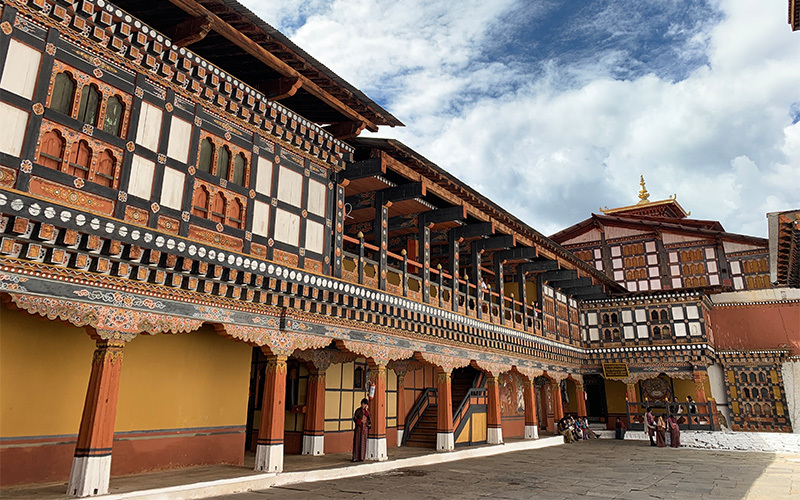
The building is dominated by black wood on a white background, and it looks elegant and beautiful. There are monks, courtyards, towers, and government office areas (but not all open). The Buddhist paintings and gorgeous wood carvings on the walls are worth appreciating. Standing upstairs, you can see the panoramic view of Paro town.
Today, there are still about 200 monks living in the Paro Dzong fort. The auditorium at the southeast corner of the monastery is where they eat their daily meals. Every spring, the grand Paro Tshechu Festival is held here, and the scene is very lively.
- Tourist Spot Address: Rinpung Dzong, Paro, Bhutan
- Opening Hours: 08:00- 18:00 (Mar to Oct), 08:00-16:30 (Nov to Feb)
- Best Time to Visit: May to October
- Nearby Restaurants: Bhukari at Uma by COMO, Paro, Champaca Café, Brioche Café
Travel Tips: It is strictly forbidden to take pictures inside the building, but you can take pictures in the open-air courtyard.
Kyichu Lhakhang - The Most Historical Attraction
Kyichu Lhakhang is the first monastery built in 638 AD and the most important sacred place in Bhutan.
Back then, the Tubo King Songtsen Gampo built 108 temples in the Himalayas to suppress banshees, and Kyichu Lhakhang was the one to suppress the banshee’s left leg. In Kyichu Lhakhang, there is a statue of Sakyamuni, which is as famous as that in Tibet Jokhang Temple, a 5-meter high Guru Padmasambhava statue and a Red Tara statue. There are also breathtaking, ornate carved wood pillars, Dilgo Khyentse Rinpoche’s ashes, and other precious items.
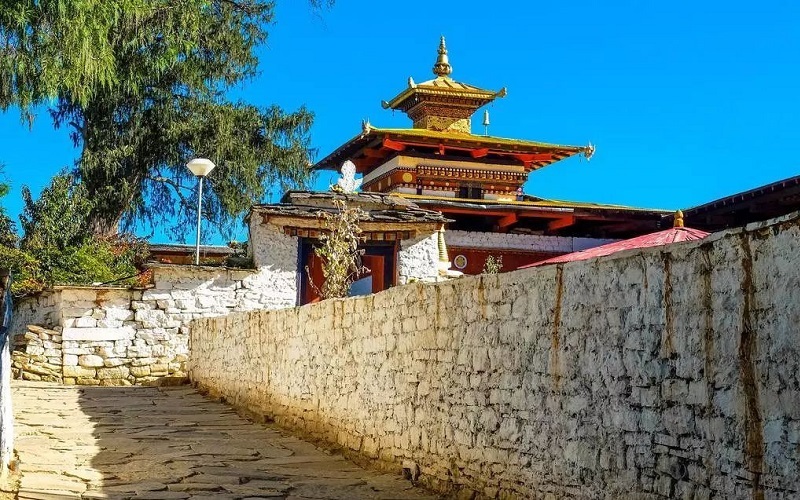
It is worth mentioning that there is a spiritual orange tree in the monastery. It is said that it will be full of fruit throughout the year. Sitting under the tree, looking up at the fruits, and listening to the chanting in the hall, accompanied by the sweet wind chimes, you will feel a kind of peace and calm. A wonderfully rare experience!
Now it is not only a place of pilgrimage for locals but also an important venue for celebrations of the royal family of Bhutan.
- Tourist Spot Address: Kyichu Lhakhang, Paro, Bhutan
- Opening Hours: 09:00-16:00 throughout the year
- Best Time to Visit: March to May and September to November
- Nearby Restaurants: Mountain Cafe, Latest Recipe, Champaca Cafe
National Museum of Bhutan – To See a Rich Cultural Collection
Earlier, the National Museum of Bhutan (Ta Dzong) was used as a watchtower of Paro Dzong. The wall was two and a half meters thick. In 1968, the Bhutan government changed it to a museum.
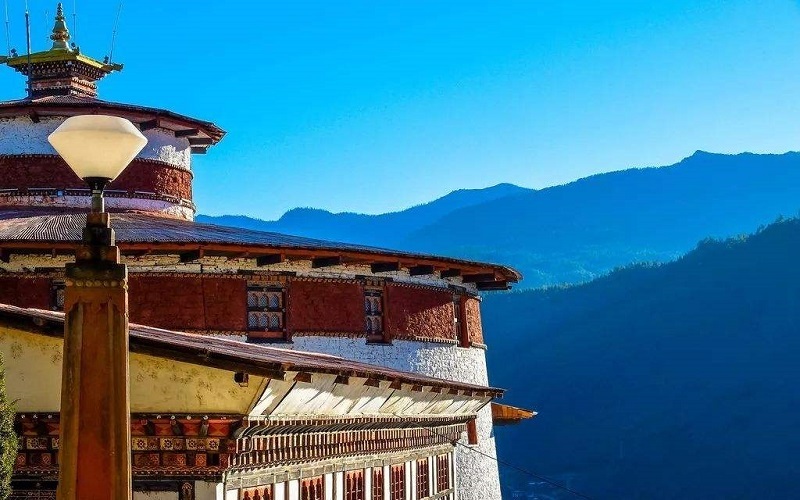
The museum has more than 3,000 collections of cultural relics, covering weapons, musical instruments, Buddha sculptures, old scriptures, thangka paintings, stamps, etc., especially stamps. The stamp subjects issued are all-encompassing, from the natural science series, such as butterflies and flowers, to the series of foreign celebrities, like Diana, to the series of human civilization and technology development, such as the landing of human beings on the moon.
Moreover, the watchtower is a building relic in itself, and it is a good place to watch Paro Valley.
- Tourist Spot Address: National Museum, Paro, Bhutan
- Opening Hours: 09:00- 17:00 throughout the year
- Best time to Visit: March to May
- Nearby restaurants: Champaca Cafe, Park 76 Cafe & Pub
Travel Tips: Taking pictures is not allowed in the museum, but you can take photos of the appearance and its surrounding scenery.
Royal Takin Preserve - See the National Animal of Bhutan
In the past, there was only a small zoo in Thimphu that kept some local small animals. Later, the fourth king of Bhutan believed that keeping animals here was incompatible with Buddhist teachings. Therefore, all animals were released and the zoo was closed immediately. However, after years of imprisonment, some animals cannot adapt to a free life. They still wander in the area, often causing urban traffic disturbances. In order to protect the animals, a fence was rebuilt on the original zoo site, which later evolved into a takin protection area. Takin is the national animal of Bhutan and can only be seen in Bhutan. Takin is a cross between sheep and cattle, which has a sheep's head and a cow's body. Its closest relative is the Arctic Musk Ox. Legend has it that Bhutan's mad sage Lama Drukpa Kunley created Tarkin from the bones of sheep and cattle. Today, Royal Takin Preserve has become the best place to watch Tarkin. In addition to takin, there are many deer species including reindeer and mountain muntjac.
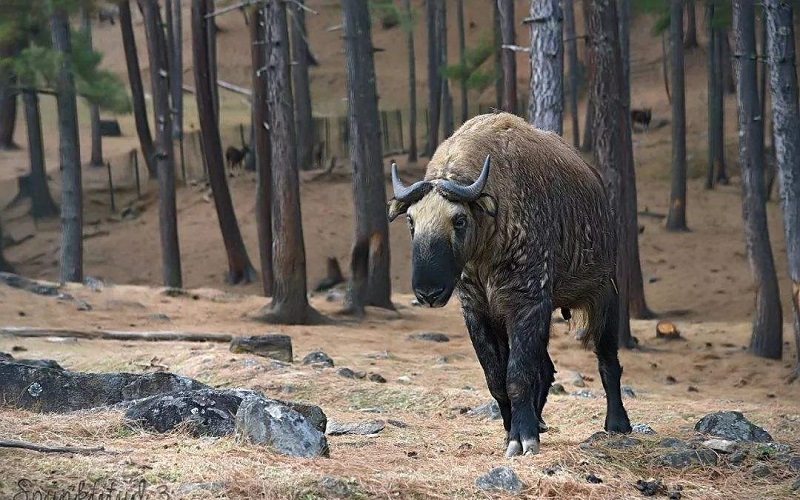
- Tourist Spot Address: Motithang, Royal Takin Preserve, Thimphu, Paro
- Opening Hours: 09:00- 17:00 throughout the year
- Best Time to Visit: between late May and late June
- Nearby Restaurants: Zombala Restaurant, The Forest Boutique
Tashichho Dzong - The Seat of the Government
The magnificent Tashichho Dzong fort stands in the northern part of Thimphu and is integrated with a canyon. It's also known as Thimphu Dzong.
It is the office of the current king and the seat of the internal affairs and finance departments. It is also the religious center of Bhutan. The exterior wall is a white double-layer structure with a prominent golden-topped tower on each corner.
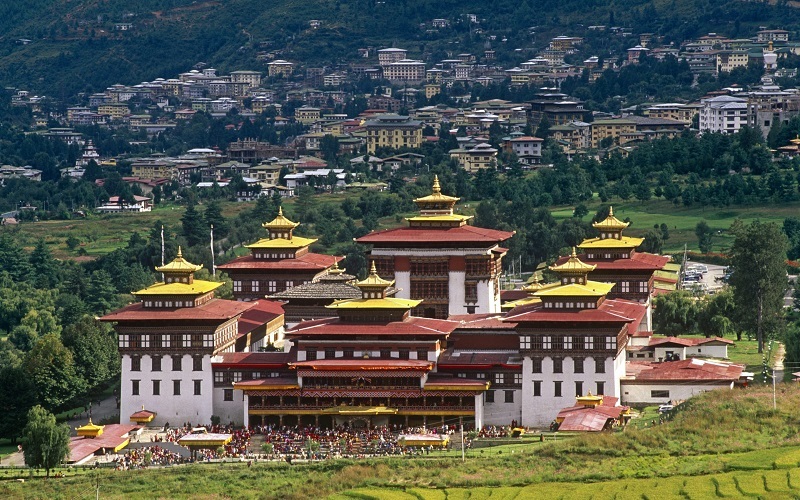
It is only open after 17:30 on weekdays, so the visitors will be more concentrated. But you can see the beautiful decorative lights shine on the white wall, which is extraordinarily elegant. A security check is required before entering. The inner courtyard and the main hall are open to the public, but the office area is not.
- Tourist Spot Address: Tashichho Dzong, Chhagchhen Lam, Thimphu, Bhutan
- Opening Hours: weekdays 17:30-18:30, Saturdays 9:00-17:00, Sundays 9:00-13:00, 14:00-16:30
- Best time to visit: September to November
- Nearby Restaurants: The Forest Boutique, Cafe Bhutan, Tandin Hotel
Travel Tips: It is strictly forbidden to take pictures inside, but you can take pictures in the open-air courtyard.
General Postal Office – Must-visit Postal Museum
The General Postal Office is one of the must-visit attractions in Bhutan. This place is a postal museum itself.
Bhutan has a very rich postal history. In 1962, the first record stamp that mankind could sing was born in Bhutan. Bhutan Post released a 3D stamp way back in 1963. They have stamps in gold, silver and steel as well. So far, Bhutan has always been in the world's advanced position in stamp design, printing and material diversity, and has won many awards at international stamp exhibitions.
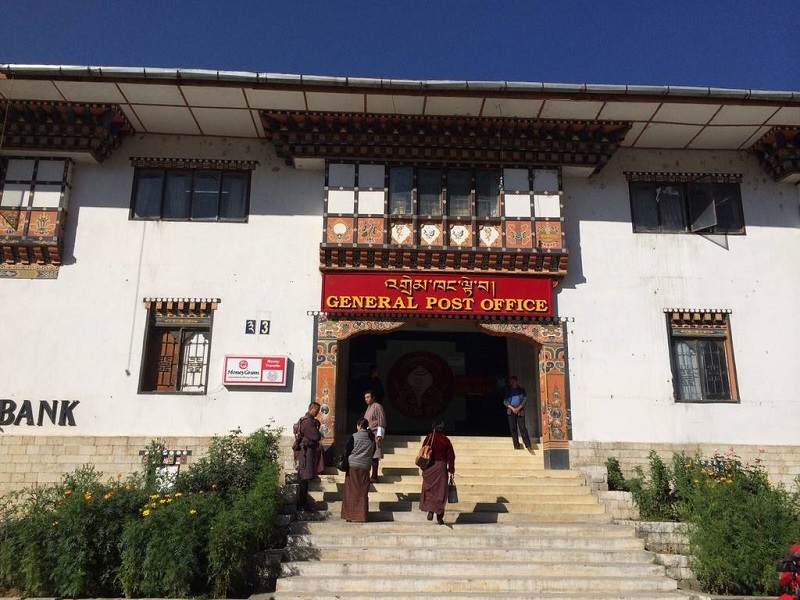
Here you can try personal headstamps, buy the unique CD stamps in the world, or make 3D stamps.
- Tourist Spot Address: close to the Changlam Square, Thimphu, Bhutan
- Opening Hours: 09:00-17:00 (Mar-Oct); 09:00-16:00 (Nov-Feb)
- Best Time to Visit: All year round
- Nearby Restaurants: Seasons Restaurant, Coffee Culture, Spices Indian Restaurant
Travel Tips: You can also make a full-page personal stamp as a souvenir.
Great Buddha Dordenma - Gigantic Sakyamuni Statue
This is one of the newly developed tourist attractions. The giant bronze Sakyamuni statue is more than 50 meters high. It stands on the top of a mountain in the south of Thimphu. It was built by China and has not yet been completed. When you visit Thimphu, you can see the giant statue in many places.
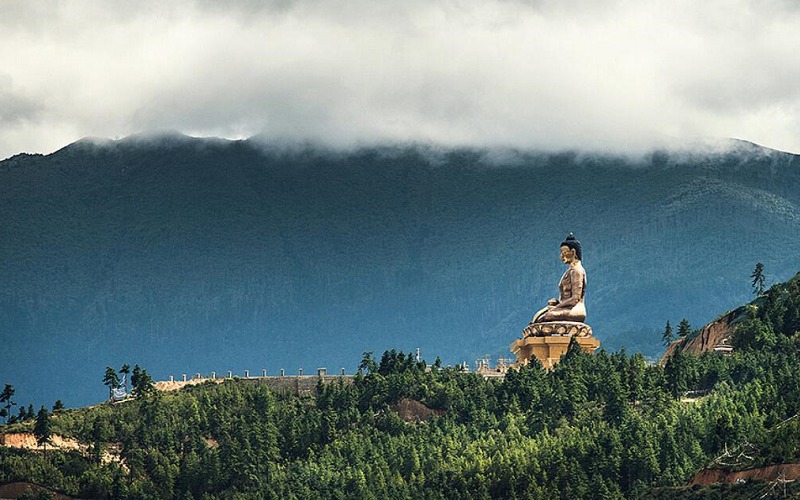
There will be multiple Buddhist halls inside the Buddha statue, which can accommodate 125,000 small Buddha statues. Here, you can not only watch the big Buddha statue up close but also overlook the charming scenery of Thimphu Valley.
- Tourist Spot Address: Kuensel Phodrang, Thimphu
- Opening Hours: 09:00- 17:00
- Best Time to Visit: September to November
- Nearby Restaurants: Ambient Cafe, Chh'a Bistro& Bar, The Zone
Travel Tips: This is a good spot for overlooking and photographing the Thimphu Valley.
National Memorial Chorten - The Landmark of Thimphu
The National Memorial Chorten was built according to the vision of Jigme Dorji Wangchuck (the 3rd king of Bhutan, known as the father of modern Bhutan). Unfortunately, when the monument was completed in 1974, he passed away. This is a monument built to commemorate the king and for peace in the world. It is also the place where the pilgrims of Thimphu turn to the tower most every day. The locals believe that this way can wash away the sins committed previously.
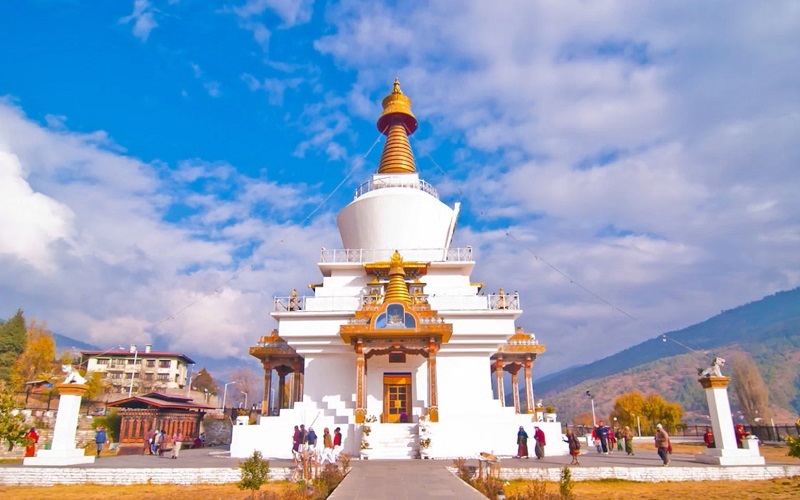
The National Monument is also a stupa, which houses many sacred religious paintings and Tantric Buddha statues. This large building with a golden spire does not store the remains of King III, but a portrait of him for the people to admire. Bells on the monument jingle in the wind, and below are long winding lines of devout people. It is said that many members of the royal family and religious leaders will also visit here.
- Tourist Spot Address: Doeboom Road, Thimphu
- Opening hours: 9:00-17:00 (Mar-Oct); 9:00-16:00 (Nov-Feb); Government and local holidays will be closed
- Best Time to visit: March to May and September to November
- Nearby Restaurants: Ambient Cafe, The Zone
Travel Tips: Taking pictures is not allowed in the museum, but you can take photos of the appearance and its surrounding scenery.
Dochula Pass – An Important Peace Memorial Chorten
Dochula Pass is 3,140 meters above sea level. When the weather is fine, you can see the Himalayan Snow Mountains. The fourth queen built the 108 Memorial Chortens here to commemorate the Bhutanese who died in the suppression of the Assam rebels in southern Bhutan, and to pray for world peace.
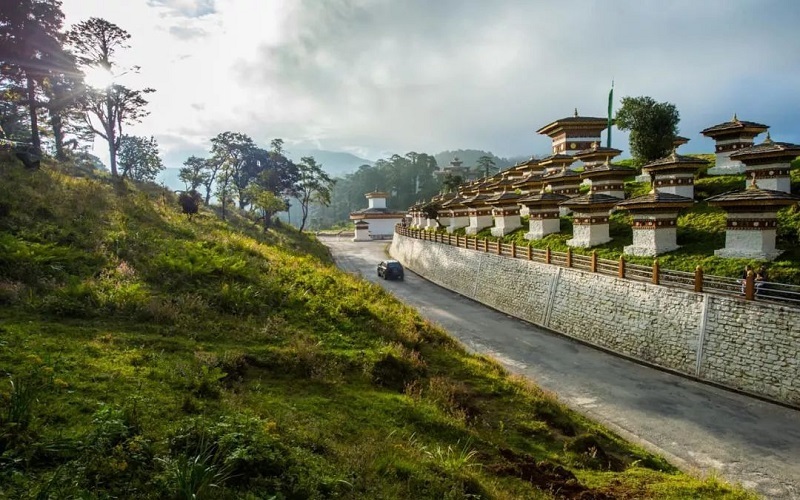
- Tourist Spot Address: On the way from Bhutan Thimphu to Punakha Dzong
- Opening hours: Open all year round
Chimi Lhakhang - To See The Most Primitive Culture
Chimi Lhakhang is a temple built to commemorate Lama Drukpa Kunley.
Drukpa Kunley was a famous mad monk in the 15th century. He conquered the female demon with his penis. Many of his followers are proud of having sex with him, greatly increasing the local population. Now, this temple is a holy place for praying for pregnancy.
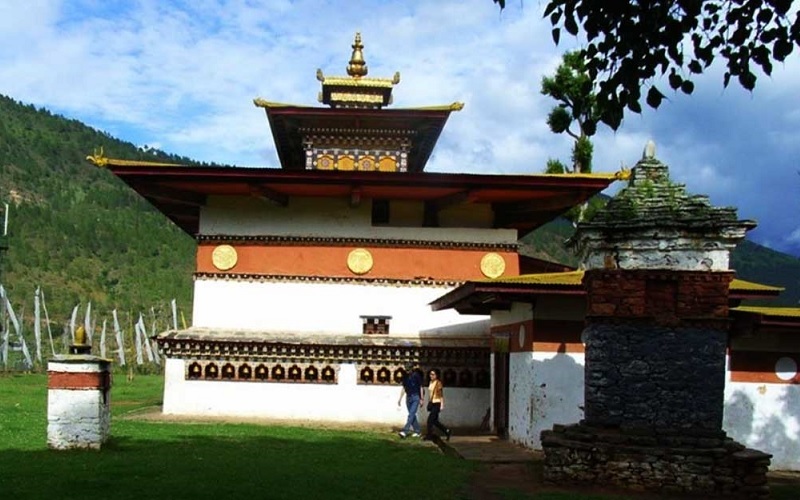
The monastery is not big. There is only a courtyard and a small Buddha hall inside. A statue of Sakyamuni is enshrined in the middle of the Buddha Hall, and on the right is a small statue of Drukpa Kunley. In addition, you can see murals telling the life of Drukpa Kunley.
As long as you donate a small amount of money, the monks here will use a wooden penis to knock the worshiper on the head to bless him.
- Tourist Spot Address: Chimi Lhakhang, Punakha
- Open Hours: 09:00- 17:00
- Best Time to Visit: March to May and September to November
- Nearby Restaurants: Chimi Lakhang Cafeteria, Merengma' Bistro & Bar
Travel Tips: You can't take pictures in the temple, but the surrounding villages are beautiful and you can take pictures.
Wangdue Phodrang Dzong – A Glory of the Past
Wangdue Phodrang Dzong is one of the few older Dzong that exists in Bhutan, and it currently gets the least maintained and repaired among the major Dzongs. Wangdue Phodrang Dzong was built in the 17th century and is a Dzong of political significance. Legend has it that when people chose the site, they saw four crows flying in four directions, which was regarded as a good omen for Buddhism to spread far and wide, so the site was settled here. It was originally an important scenic spot, but unfortunately, it was destroyed by a fire in June 2012. Half of the ancient books and antiques inside the temple were burned down. The Wangduephodrang Dzong Reconstruction Project is now underway.
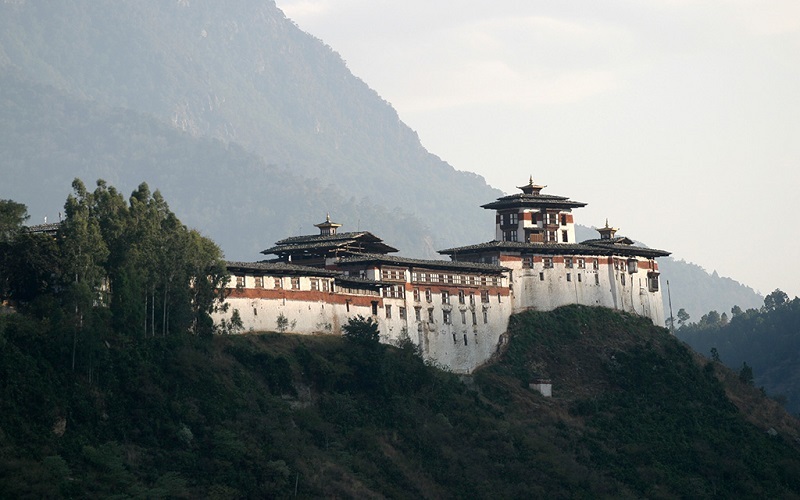
- Tourist Spot Address: Wangdue Phodrang-Nobding Hwy, Wangdue Phodrang
- Nearby Restaurants: Kuenphen Restaurant, Chimi Lakhang Cafeteria
Tips: Wangdue Phodrang Dzong is also the place where the Wangdu Phodrang Tshechus Festival is held every autumn.
Punakha Dzong – The Most Beautiful Dzong
Punakha Dzong, located in western Bhutan, is considered the most beautiful Dzong in Bhutan and one of the best Bhutan tourist places to visit.
Renowned as the most important Dzong in Bhutan's history, there are unique murals that are not found in other monasteries in Bhutan. Legend has it that the builders summoned the most prestigious craftsmen of the time and ordered them to make a Dzong look like paradise. While the craftsmen were thinking hard, the builder took them to heaven for drawing. Punakha Dzong thus becomes a portrayal of heaven on earth. You won't find any nails between any two pieces of wood.
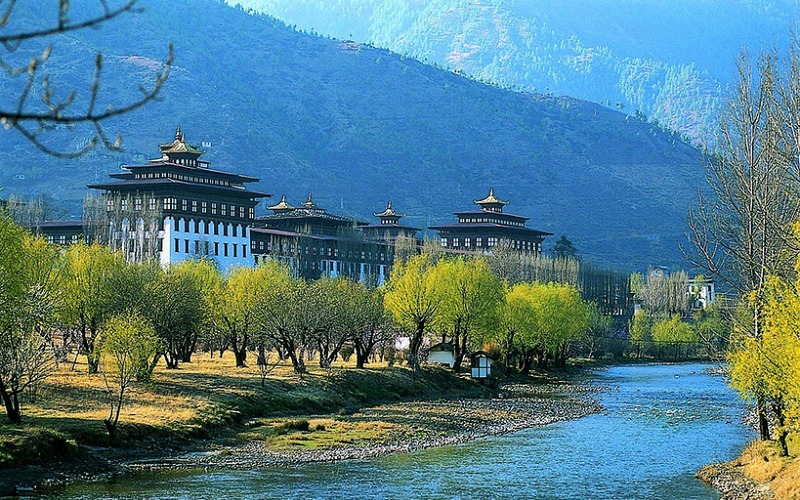
The most beautiful monastery witnessed the most romantic love story between the current king of Bhutan and his wife. They married in 2011 here. In summer, the fruits of the linden tree in the courtyard fall all over the ground. There are not many tourists and it is quiet. Under the sunset, Punakha Dzong put on golden clothes, solemn and beautiful!
- Tourist Spot Address: Punakha, Bhutan
- Opening hours: Monday-Friday 9:00-17:00, Saturday 11:00-13:00, 14:00-16:00, closed on Sunday.
- Best Time to Visit: March to July
- Nearby Restaurants: Merengma' Bistro & Bar, Momos, Phaksha Paa
Travel Tips: You can stop to take a panoramic picture at the corner of the road near the temple.
Khamsum Yulley Namgyal Chorten - Best Valley Chorten
Khamsum Yulley Namgyal Chorten is the only pagoda in Bhutan that enshrines all kinds of protector gods. Each floor enshrines different protector gods. This is also unique in the world. In the 1990s, Ashi Tshering Yangdon Wangchuck, the third queen of Bhutan, decided to build a monument to avoid evil spirits. The entire project lasted eight and a half years. Later, this sacred religious building was regarded as a visual manifestation of the Buddha's teachings, which can always protect the peace and tranquility of Bhutan. Another special feature of the Kam Shayelinaye Monument is that its architectural design details are all taken from Buddhist scriptures, not technical books. The Khamsum Yulley Namgyal Chorten stands majestic on a prominent ridge in the Punakha Valley. The view of the entire Punakha Valley from the top of the tower is truly beautiful. The Monument is an outstanding example of Bhutanese architecture and art, as well as a jewel in the history of human religious architecture.
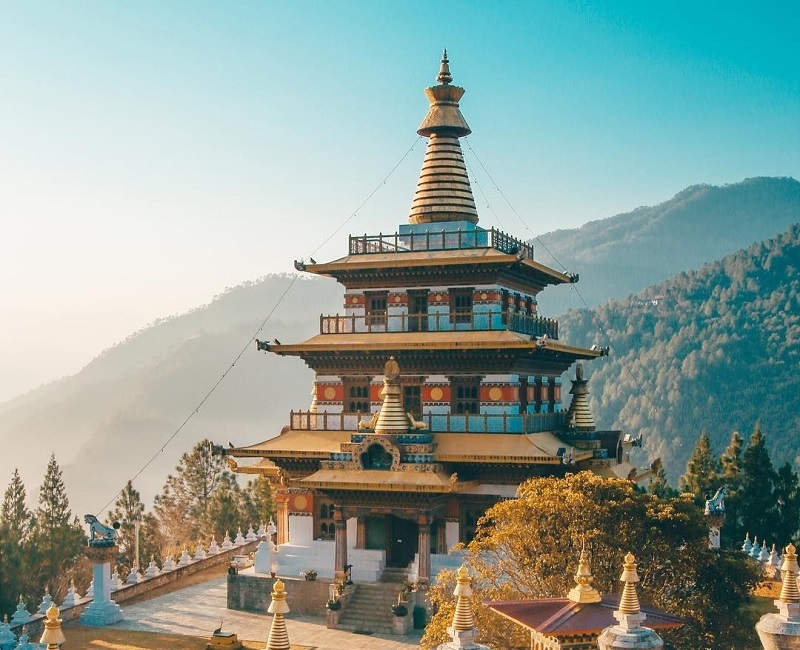
- Tourist Spot Address: Thimphu-Punakha Highway
- Opening hours: 08:00- 18:30
- Best Time to Visit: March to May and September to November
Phobjikha Valley - One of the Most Important Wildlife Sanctuaries
Phobjikha valley is a famous glacial valley in Bhutan and it's one of the wonderful Bhutan tourist spots. There are many kinds of wild animals, among which the black-necked crane is the most famous.
In winter, the valley will welcome black-necked cranes migrating from Tibet, so it has become one of the most important nature reserves in Bhutan, and it is also a holy place for birdwatchers. If you can travel to Bhutan in spring when black-necked cranes return to Tibet, you will be very lucky to see a parting scene between humans and animals. It is said that the black-necked cranes here will hover over the Gangtey Monastery before returning, waiting for the villagers to sing the song of farewell, and flutter away.
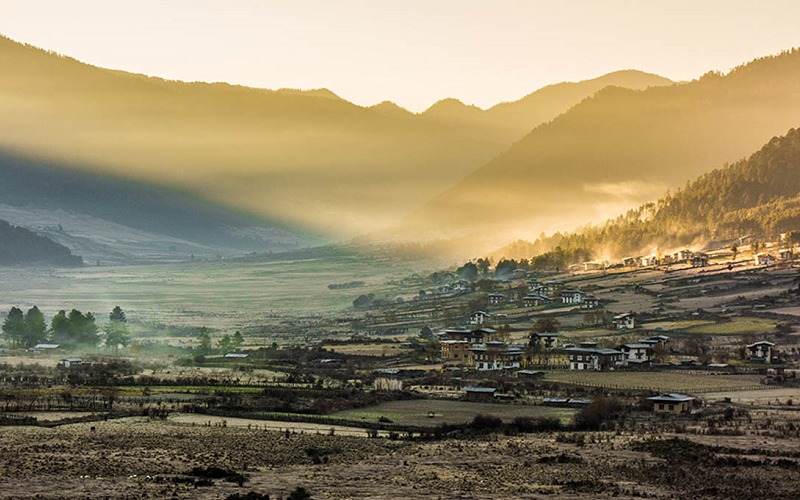
There are also deer, bears, foxes, wild boars, leopards, and many other wild animals here. It is a veritable animal paradise. In order to protect these wild animals, the local government designated 163 square kilometers in the valley as a nature reserve to better protect them.
The Bhutanese government also advocates that tourists who travel here take a hiking tour, so that they can see the flora and fauna in the valley up close without causing pollution to the environment. The whole trekking route takes about three or four hours to walk. If you stick to it, you can still walk the whole way.
- Tourist Spot Address: Phobjikha Valley, Wangdue Phodrang
- Opening Hours: Open all year round
- Best Time to Visit: October to December
Travel Tips:
- It is open all day and there are no tickets.
- There are many animals and plants, so please take good care of them.
- In winter, we should check the weather forecast in advance and prepare for cold weather.
Gangtey Goemba - Only "Red Sect" Temple in Bhutan
Gangtey Monastery is located on the open high ground, overlooking the entire Phobjikha valley. It is the only Tibetan Buddhist "Red Sect" temple in Bhutan.
The monastery was constructed 1,500 years ago. The Buddha Hall in the center is in a very traditional Tibetan style. It is supported by eight huge pillars and is said to be one of the largest Buddha Halls in Bhutan. The Tibetan Buddhist paintings on the outer walls are colorful. Although they have gone through two or three hundred years of history, the mottled ones are still full of tension. The odd-looking auspicious beasts are distributed in every corner of the temple eaves. Every year from the eighth to the tenth day of the eighth month of the lunar calendar is Bhutan’s three-day Gangtey Tshechu festival, people will come here to pray for their families on the last day.
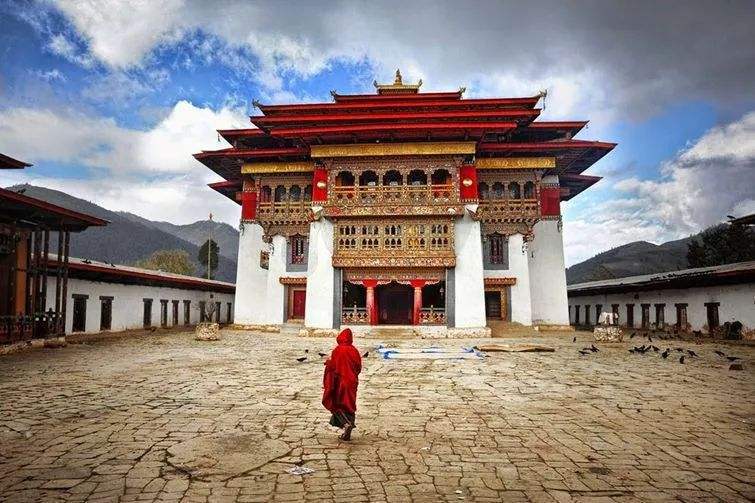
There is a Buddhist academy near the temple, which has attracted many people to study Buddhism courses for 9 years. Near the Buddhist academy, there's a monastery. A row of long white bungalows is used by monks for meditation. The meditating monks have to stay in the bungalows for three years, three months, and three days without going out. The meals are delivered from other monks outside.
- Tourist Spot Address: on a forested hill of Phobjikha Valley
- Opening Hours: 09:00- 17:00
- Best Time to Visit: October to December
Trongsa Dzong – The Largest Fortress in Bhutan
Trongsa Dzong is the largest Dzong fortress in Bhutan. Trongsa Dzong is located in Trongsa town, where the royal family’s ancestral home was. It was built by Ngawang Namgyal in 1648, and was built on a high mountain with an altitude of 2,200 meters, overlooking the Drangme Chhu River.
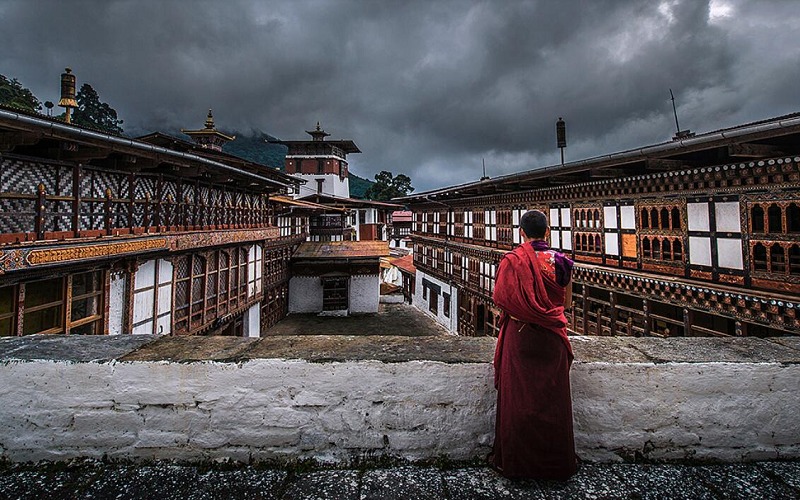
There are 23 independent temples like a labyrinth in this magnificent ancestral fort, but not all of them are open to tourists. Among them, the most worth visiting are the Dharma Hall in the north and the Mithrub Lhakhang in the south. Most of the exquisite decorations were designed by the first king during his reign. Nowadays, before the king takes the throne, he must first serve as a governor here.
- Tourist Spot Address: Trongsa Dzong, Trongsa, Bhutan
- Opening Hours: 9:00-17:00 (Mar-Nov); 09:00- 16:00 (Dec-Feb)
- Best Time to Visit: March to May and September to November
Travel tips: The Trongsa Tshechu Festival is generally held from the end of September to mid-December. Only a small number of visitors are allowed.
Burning Lake – A Holy Site with Mysterious Treasure
Also known as Mebar Tsho, Burning Lake is considered one of the most sacred places in Bhutan. Its name is derived from the legendary story of the famous terma king Pema Lingpa (second only in importance to Padmasambhava in Tibetan Buddhism).
According to legend, Saint Pema Lingpa walked into the lake holding Guru Padmasambhava’s oil lamp, and when he walked out of the water, the oil lamp in his hand was still burning. This is also the origin of the lake's name.
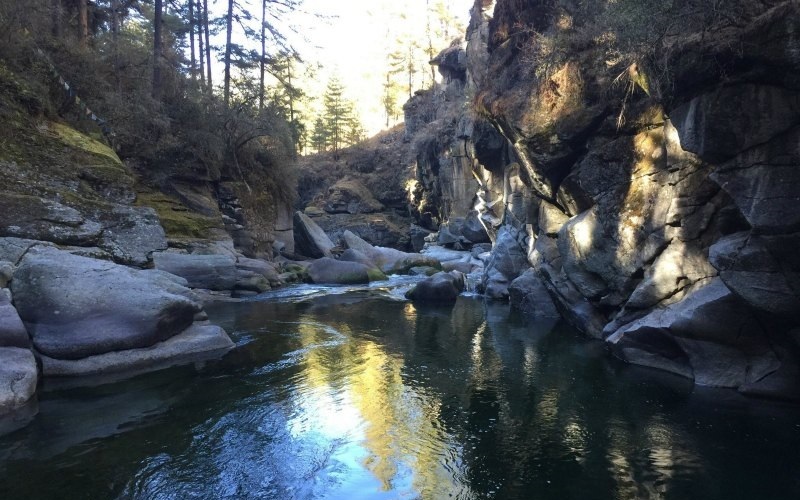
He took out a one-cubit-high statue of Guru Rinpoche and a skull-shaped treasure. In the treasure are the precious termas, and these termas are still being recited by the monks.
Till today, people still firmly believe that those who do less evil, standing on the rocks and looking down into the lake, can enjoy extraordinary sights. Pious Bhutanese always come here on auspicious days, light a butter lamp and float on the water, and make a wish.
- Tourist Spot Address: Bumthang
- Opening Hours: All year round
Travel Tips: The car cannot drive directly to the lake, and you must walk a section of the mountain road.
Jakar Dzong – The Old Castle of the White Bird
Jakar Dzong, also known as "City of White Bird", is located in the east-central region of Bhutan. In the 16th century, a big white bird flew into the sky and landed on a mountain ridge, indicating luck and prosperity. Lama Drukpa decided to build Bumthang here.
Jakar Dzong is surrounded by a mile-long city wall and there's a 150-foot tower inside. It was the center of the Bumthang area and played an important role in resisting the eastern Dzongkha. It is now the administrative center of Bumthang. It is famous for producing honey, cheese, apples, and apricots.
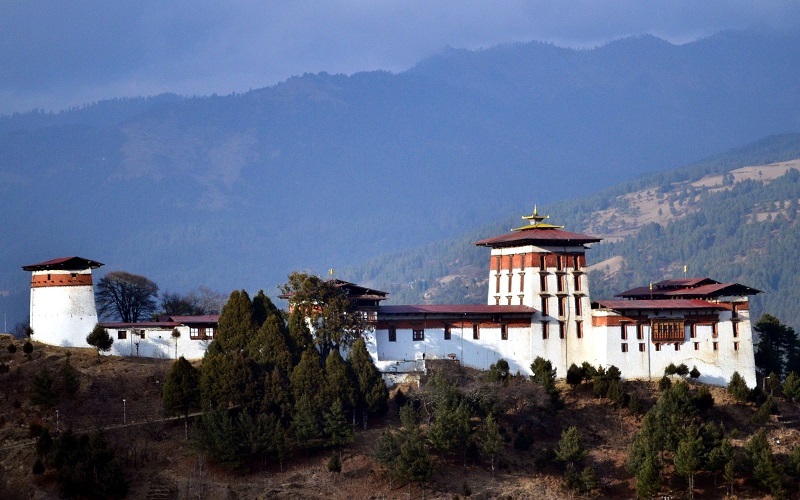
The funerals of the first three kings were all held here. The white-walled Jakar Dzong is located high in the Bumthang Chhu River valley, condescending, like a huge white bird overlooking the entire valley. This is one of the rare fortresses built on top of the mountain. The past two generations of kings have used this as their summer residence.
- Tourist Spot Address: Bumthang
- Opening hours: 09:00 – 17:00
- Best Time to Visit: May to August
- Nearby Restaurants: Cafe Perk Bumthang Bhutan, Swiss Guesthouse Bumthang
Kurjey Lhakhang - The Most Important Buddhist Temple
Kurjey Lhakhang is located in the Bumthang Valley at an altitude of 2,600 meters. It is the burial place of the first to third kings of the Wangchuck Dynasty of Bhutan.
This temple has a long history since 746 AD. At that time, Sendah Gyab, the king of Bumthang, invited Guru Padmasambhava from Nepal to Bhutan. The reason for this invitation was that the local demon had cursed the king with a bad disease, and the king's health was deteriorating. Upon receiving the invitation, Guru Rinpoche set out to Bhutan, meditated in a cave, and finally subdued the local demon Shelging Karpo and regained the king's soul.
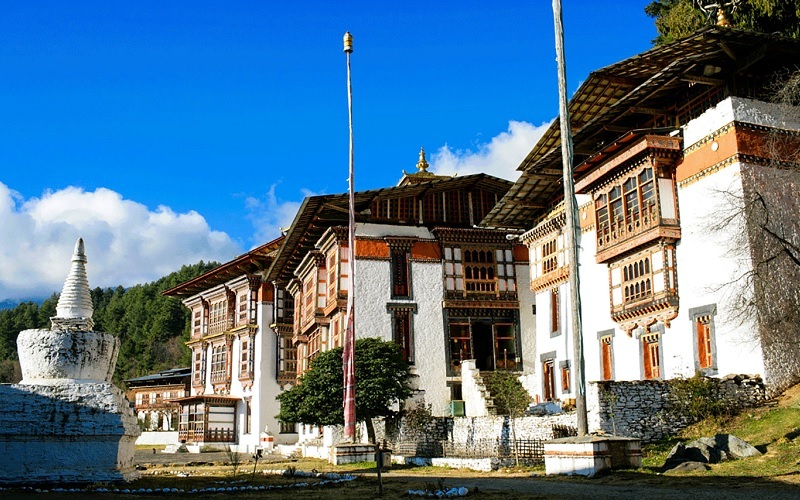
Master Padmasambhava left an imprint of his body in this cave. This is also the origin of the temple's name. Kur means body, and jey means imprint. You can see it in the temple's oldest cave. The big cypress trees behind the temple are said to have sprouted from Guru Rinpoche's walking stick. So this place has become a holy site.
- Tourist Spot Address: Bumthang
- Open Hours: 08:00- 17:00
- Best time to Visit: March to May (when alpine rhododendrons and peach blossoms bloom)
Email response within 0.5~24 hours.


